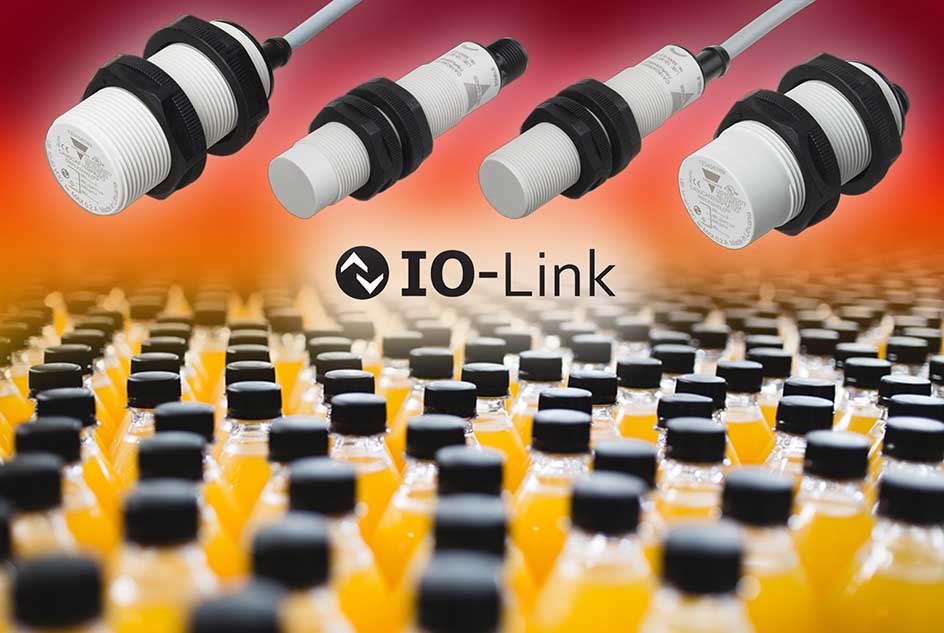Information gathering
Posted in Carlo Gavazzi Sensors by Alison on March 24th 2020

Consider the advantages of using IO-Link Sensors
There are many advantages such as increased availability of data, standardised wiring, the ability for remote configuration and monitoring as well as simple device replacement says Martin Wyatt, Business Development Manager at Carlo Gavazzi UK.
There is a sensor revolution underway. A decade ago, devices like proximity sensors were relatively simple on/off devices, they could detect whether an object was nearby and that was about it. Now a new range of proximity sensors are available with much greater processing power which enables them to deliver a significant range of outputs including alarms, sensor status and even diagnostic data.
What gives these intelligent new sensors the capability to make available all of the various outputs is that they communicate using IO-Link. This is an open standard communication protocol that allows for the bi-directional exchange of data from the IO-Link sensor to an IO-Link master device and from the master to the sensing device.
It is worth noting that IO-Link operates peer to peer (or point to point), it is not on a network, so each sensor talks directly to the IO-Link master controller. The IO-Link master can then transmit this data over various networks or field-buses to make it available for immediate action or to save it for future or long-term analysis. In addition, because IO-Link follows the IEC61131 program standards for programmable logic controllers (PLCs), IO-Link enabled devices are compatible with all such PLCs enabling them to be integrated into virtually any automation system.
What makes IO-Link so special is the increased availability of sensor-level data. The sensors can also operate in standard I/O mode. However, when connected to an IO-Link master the sensors switch automatically to IO-Link communication.
It is in IO-Link mode that the advanced electronics enable a single sensor to become an intelligent device. For example, Carlo Gavazzi’s 4th Generation Tripleshield CA Series capacitive proximity sensors, provide 43 fully configurable parameters including:
- Configurable output: NO, NC, PNP, NPN or push-pull
- Adjustable switching distance: 33%, 50%, 75% and 100% of the maximum Sn
- Adjustable hysteresis: standard and extended
- Switchpoint mode: single point, two-point or window mode
- Timer functions: Turn On delay, Turn Off delay and Turn ON and Off delay
- Temperature alarms
In addition by setting Carl Gavazzi’s sensor to frequency detection and window mode it is possible to use the proximity sensor to monitor rotational speed and to check over- and under-speed conditions of a cycling mechanism. Similarly, using the sensor’s divider function it is a simple task to set the number of activations needed to change output from the device to enable it to work as a Rev Counter. For example, by setting the divider number to the number of teeth on a gear, the inductive sensor will measure its RPM.
The real beauty of the system, however, is that IO-Link capable sensors are available in standard sizes, so that they are interchangeable with existing standard sensors making retrofit simple. They are CE marked and they have ECOLAB approval for chemical resistance. What’s more, the sensors use standard connectors and cabling - the same system that a standard inductive or proximity sensor would use - making new installations straightforward and the upgrade of existing sensor systems easy, saving time and resources.
Sensor replacement is straightforward too. The IO-Link master device records how a sensor is configured. If that sensor is replaced, the master device will configure the new device with the exact operating parameters.
This ability to reconfigure a sensor also enables one sensor to be used for numerous applications (and in each application to be configured so as to be the optimum sensor for the job), cutting down on the number of spares required or stock needed by a distributor. It also means that where there are changes in the product being produced, rather than physically moving the sensor or the sensor mount, it is now possible to send a new configuration directly to the sensor. It is a task that can be done on the fly, if necessary, to speed machine set-up and to enable greater product changeover and diversity or to accommodate variations in product packaging for, say, different markets.
IO-Link also allows an operator to interrogate an individual sensor to see what it is measuring and how it is performing. Diagnostics allow operators to easily identify when and why a sensor is malfunctioning without the need to shut down a production line.
It is this ability to monitor sensor outputs, receive real-time status updates and adjust a sensor’s operating parameters from virtually anywhere that will enable manufacturers, for example, to speedily identify and resolve problems quickly and effectively the moment they are detected by the sensor. It also enables users to make decisions based on realtime data from the machine to help improve efficiencies and minimise downtime and costs.
The smart factory or Industry 4.0 is the name given to the trend in advances in automation and data exchange in manufacturing technologies which communicate over the Internet of Things to deliver a smart factory. Historically field devices were limited in the provision of data, but now IO-Link will provide industry with vast amounts of useful information from the manufacturing process to aid functionality and help in making informed decisions and to reduce the risk of machine downtime. In addition to improved machine availability, together these capabilities will result in reduced overall costs and increased process efficiency. Viva La Revolucion.
Enjoyed this post? Share it!
Share this article:





















